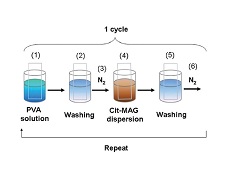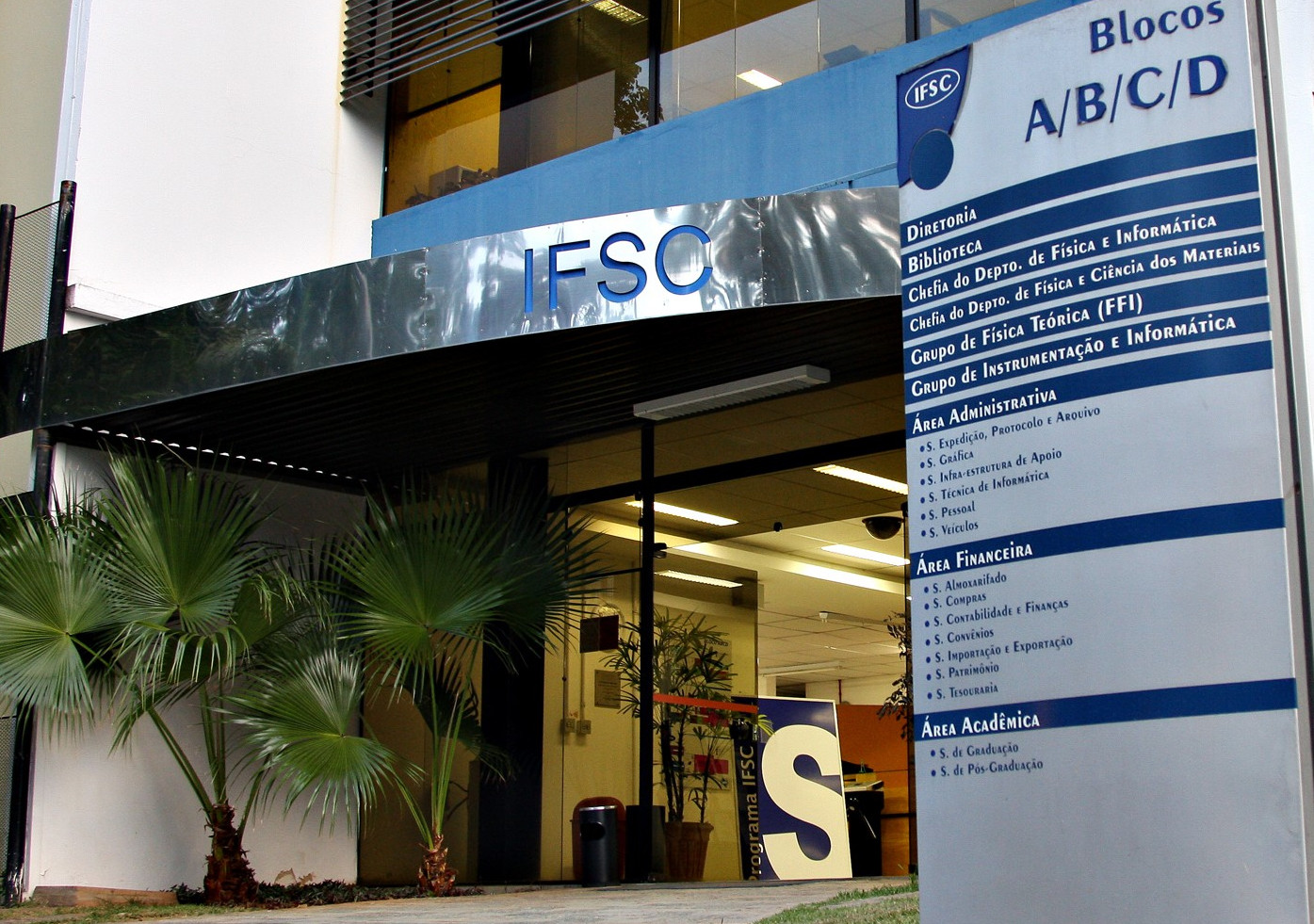Magnetic studies of layer-by-layer assembled polyvinyl alcohol/iron oxide nanofilms.
MOSINIEWICZ-SZABLEWSKA, Ewa; CLAVIJO, Antonia R.; CASTILHO, Ana P. O. R.; PATERNO, Leonardo G.; SILVA, Marcelo de Assumpção Pereira da; WIECKOWSKI, Jaroslaw; SOLER, Maria A. G.; MORAIS, Paulo C.
MOSINIEWICZ-SZABLEWSKA, Ewa; CLAVIJO, Antonia R.; CASTILHO, Ana P. O. R.; PATERNO, Leonardo G.; SILVA, Marcelo de Assumpção Pereira da; WIECKOWSKI, Jaroslaw; SOLER, Maria A. G.; MORAIS, Paulo C.
 Abstract: This study reports on investigation of the magnetic properties of layer-by-layer (LbL) assembled nanofilms comprising polyvinyl alcohol (PVA) and citrate-coated magnetite (cit-MAG) nanoparticles deposited onto silicon (SF sample) and glass (GF sample) substrates. DC magnetization measurements were performed over the temperature range of 4 K to 300 K, in the applied magnetic field range of 60 kOe. The magnetic data of the as-synthesized cit-MAG nanoparticles (F sample) are also collected for comparison. The three as-fabricated samples reveal perfect superparamagnetic (SPM) behavior only around room temperature; at temperatures lower than 200 K the SPM scaling is not observed and all samples behave as interacting superparamagnetic (ISPM) materials. The evolution from the ISPM to the SPM regime is marked by a steady decrease in the hysteretic properties of all samples, with the temperaturedependence of the coercivity decreasing slower than the T1/2 behavior predicted for non-interacting superparamagnetic particles. The modified Bloch's law used to assess information on nanoparticles' surface spins gives the Bloch's exponent close to 2 (for the F and SF samples) and close to 1 (for the GF sample). Interestingly, the surface spin freezing temperature (Tf) is 8 1 K for all samples. The magnetic behavior of all three samples can be described within the model picture of a core-shell structure for the cit-MAG nanoparticles; the core comprising magnetically-ordered spins whereas the shell behaving as a spin-glass-like system. However, the contribution of the shell magnetism to the effective magnetic properties is much more evident in the GF sample in which magnetic dipole-dipole interaction is three-times weaker than in the SF sample and two times weaker than in the F sample. In contrast, the strong magnetic dipole-dipole interaction in the SF sample affects the surface spins, hindering the onset of magnetically-ordered regions in the nanoparticle's shell, making the surface magnetism contribution negligible. The LbL-fabricated nanofilms herein reported and the presented analysis of their magnetic properties we envisage can support the engineering of magnetic nanofilms for multiple applications. Abstract: This study reports on investigation of the magnetic properties of layer-by-layer (LbL) assembled nanofilms comprising polyvinyl alcohol (PVA) and citrate-coated magnetite (cit-MAG) nanoparticles deposited onto silicon (SF sample) and glass (GF sample) substrates. DC magnetization measurements were performed over the temperature range of 4 K to 300 K, in the applied magnetic field range of 60 kOe. The magnetic data of the as-synthesized cit-MAG nanoparticles (F sample) are also collected for comparison. The three as-fabricated samples reveal perfect superparamagnetic (SPM) behavior only around room temperature; at temperatures lower than 200 K the SPM scaling is not observed and all samples behave as interacting superparamagnetic (ISPM) materials. The evolution from the ISPM to the SPM regime is marked by a steady decrease in the hysteretic properties of all samples, with the temperaturedependence of the coercivity decreasing slower than the T1/2 behavior predicted for non-interacting superparamagnetic particles. The modified Bloch's law used to assess information on nanoparticles' surface spins gives the Bloch's exponent close to 2 (for the F and SF samples) and close to 1 (for the GF sample). Interestingly, the surface spin freezing temperature (Tf) is 8 1 K for all samples. The magnetic behavior of all three samples can be described within the model picture of a core-shell structure for the cit-MAG nanoparticles; the core comprising magnetically-ordered spins whereas the shell behaving as a spin-glass-like system. However, the contribution of the shell magnetism to the effective magnetic properties is much more evident in the GF sample in which magnetic dipole-dipole interaction is three-times weaker than in the SF sample and two times weaker than in the F sample. In contrast, the strong magnetic dipole-dipole interaction in the SF sample affects the surface spins, hindering the onset of magnetically-ordered regions in the nanoparticle's shell, making the surface magnetism contribution negligible. The LbL-fabricated nanofilms herein reported and the presented analysis of their magnetic properties we envisage can support the engineering of magnetic nanofilms for multiple applications. | |
| Physical Chemistry Chemical Physics |
| v. 20, n. 41, p. 26696-26709 - Ano: 2018 |
| Fator de Impacto: 3,906 |
| http://dx.doi.org/10.1039/c8cp05404e |  @article={002910575,author = {MOSINIEWICZ-SZABLEWSKA, Ewa; CLAVIJO, Antonia R.; CASTILHO, Ana P. O. R.; PATERNO, Leonardo G.; SILVA, Marcelo de Assumpção Pereira da; WIECKOWSKI, Jaroslaw; SOLER, Maria A. G.; MORAIS, Paulo C.},title={Magnetic studies of layer-by-layer assembled polyvinyl alcohol/iron oxide nanofilms},journal={Physical Chemistry Chemical Physics},note={v. 20, n. 41, p. 26696-26709},year={2018}} @article={002910575,author = {MOSINIEWICZ-SZABLEWSKA, Ewa; CLAVIJO, Antonia R.; CASTILHO, Ana P. O. R.; PATERNO, Leonardo G.; SILVA, Marcelo de Assumpção Pereira da; WIECKOWSKI, Jaroslaw; SOLER, Maria A. G.; MORAIS, Paulo C.},title={Magnetic studies of layer-by-layer assembled polyvinyl alcohol/iron oxide nanofilms},journal={Physical Chemistry Chemical Physics},note={v. 20, n. 41, p. 26696-26709},year={2018}} |





